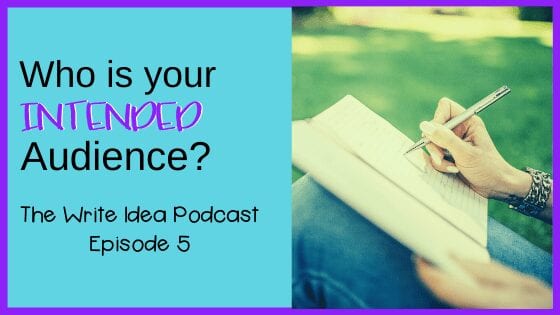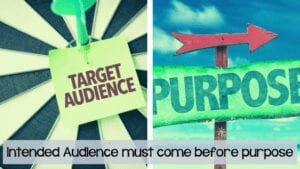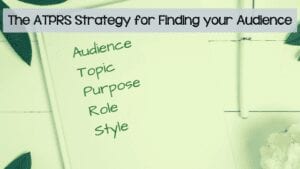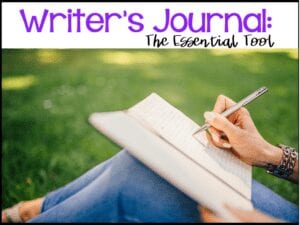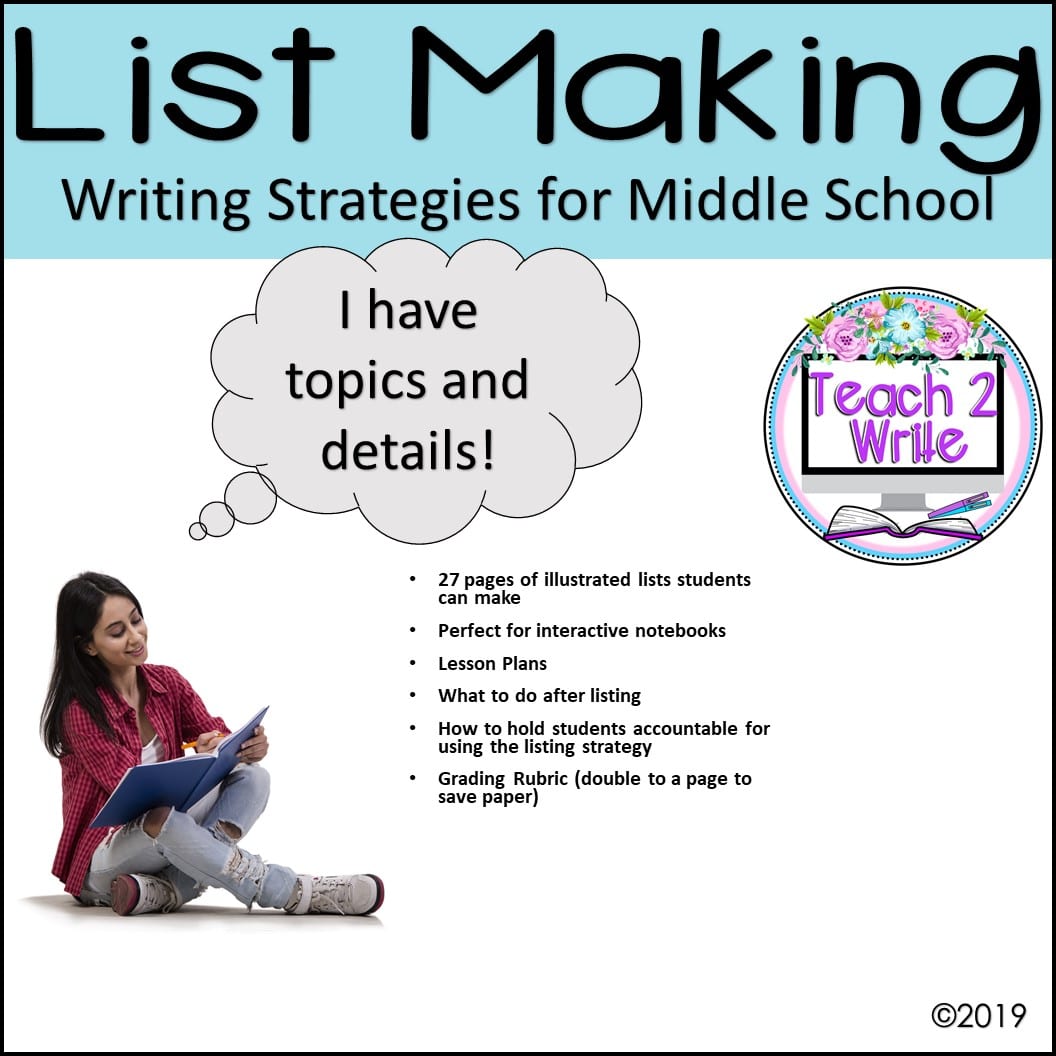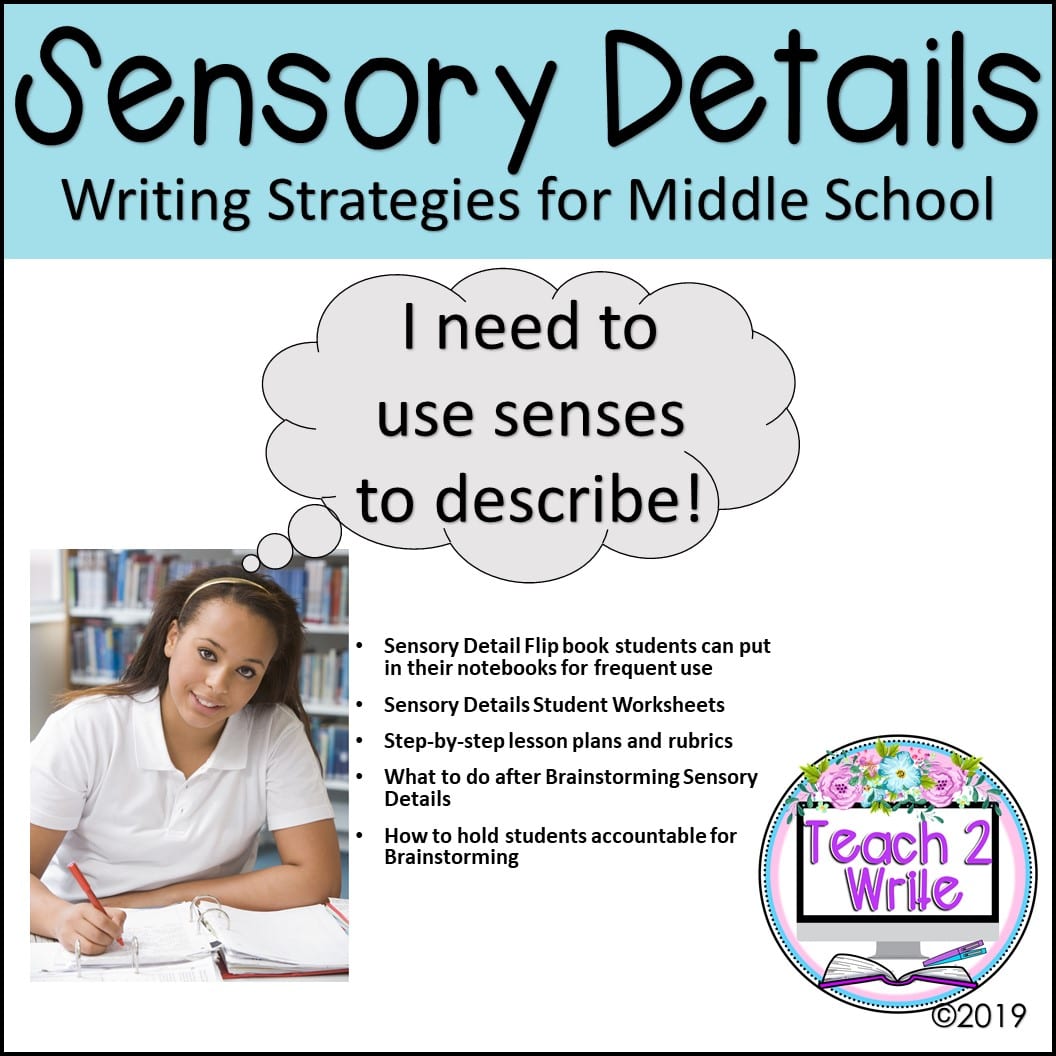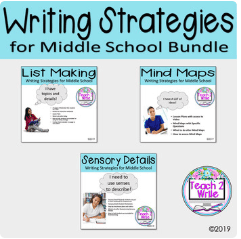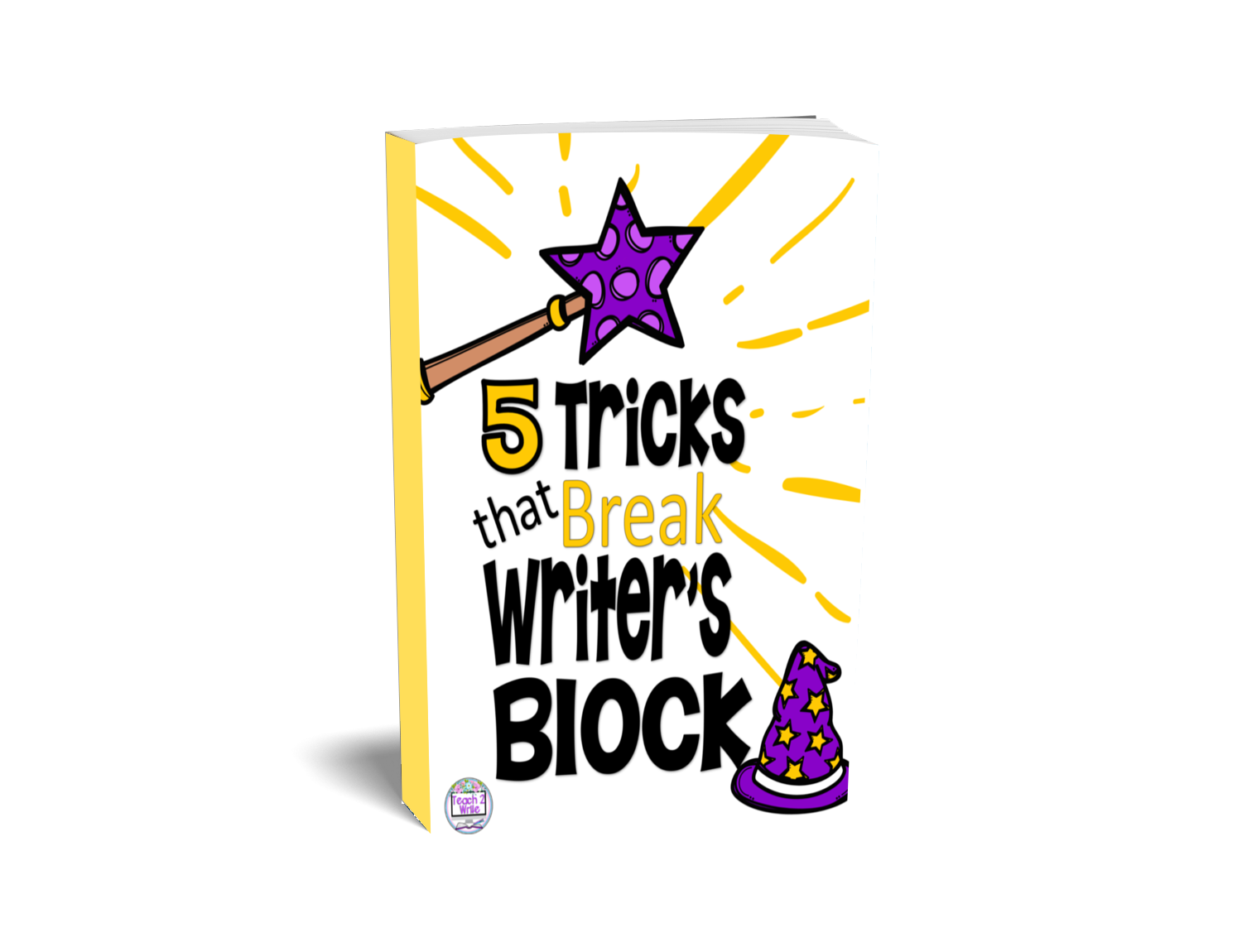Who is your intended audience? I often explain to my students that they need to know who they are writing for – who will be their intended audience? I remind students that they aren’t just writing to complete an assignment, and I’m NOT supposed to be their ONLY audience, especially in our class. In this episode I’m going to be talking about the intended audience- which also points to a purpose for writing as well.
Teachers and writers, we all struggle with WHAT we should write, but maybe we should think FIRST about our audience, our readers, because THE AUDIENCE determines many of the decisions that writers must make.
Therefore, I teach my students that EVERY time you write, you ask “Who is my intended audience?”

Basically, there are just two intended audiences:
Only two, Kathie? Really? Yes, two. First, there’s YOU and second, there’s a public audience. This distinction between these two main audiences can make a big difference in how you approach a particular piece of writing. There are many reasons why you might write for yourself – everything from a shopping list to a personal journal.
Over the years, I’ve journaled a lot – probably because I read “The Diary of Anne Frank” in middle school, which is when I kept a daily journal. Along with journaling, I write a lot of poetry for myself, with no intent of ever publishing any of it. This is because my poetry is where I play with words, and I get deeply emotional sometimes. In fact, my best poems are about people that have passed away. However, I don’t want to publish a book of poems about death. I know other writers have done that, but it’s just not me.
After my daughter Erin was born, I’d get bored while feeding her, so I often wrote in a journal. It was a journal I created for her. It was TO HER, with each entry beginning with “Dear Erin.” However, in rereading it, I realized that the Erin-as-a-baby journal is really written TO ME as a young mom, trying to hold onto the memories of her rapidly growing baby girl.
An Audience of One – You:
My point here is that there are some pieces of writing that you do for yourself, to find yourself, to release some of the mental toxins that have collected within your brain, to have a one on one conversation with yourself.
Some people do publish their memoirs, and perhaps one day I might, but for now, I choose to write that stuff only for me.
Now, because my audience is just me, I write everything in ONE draft. Everything is rough – I don’t worry about style or purpose or audience or anything like that. This type of writing is not something I necessarily do every day, but when I need it, especially emotionally – I journal it. But when I write for an audience…a different set of factors come into play, which I will talk about right after this message.
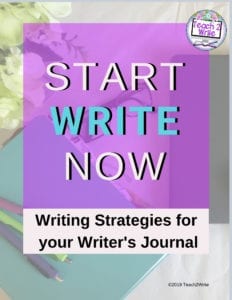
Start Write Now Guide
The Start Write Now Guide gives you the strategies for generating writing ideas for yourself or for your writing students. It also includes a PowerPoint you can use to introduce these strategies to your students. Within this PowerPoint and the guide, there is a link to the Mind Mapping video that I created to help teach this most powerful writing strategy.
Included you’ll find:
- Daily Practice Advice, such as Begin with the End in Mind:
- Knowing your Audience and Purpose reduces wasted time
- A Fictional Genres Infographic that contains the main 6 genres and what audiences expect o f each, As well as Writing Strategies that Work: Mind Mapping, Listing, Freewriting, and Sketching/Drawing are all explained
- ALso included are over 30 Questions Writers often Ask Themselves: About Places, Objects,People, and Events To receive your free copy of the Start Write NOw guide, click on the link in the show notes to get your FREE Start Write Now Guide And get started writing today!
Knowing your audience
I want to shift our focus to writing for an intended audience, where your intent is to publish. You have to know your audience if you are going to publish anything that you want people to actually read. When most writers start writing, they usually start with an idea. This is great – you need to start with ideas! I teach strategies all about that in The Start Write Now Guide and in Episodes 2, 3 and 4 of the Write Idea Podcast.
However, after you get those ideas,the next thing you should do is ask yourself: Who, besides me, would be interested in knowing MORE about this idea?
Or if you’re writing fiction: Who, besides me, would want to read about this type of character or that type of setting, etc? So, for example, if you are writing a Halloween story, your audience wants excitement and fear. However, if you are writing a love story, your audience wants to understand and feel love.
Unfortunately, a lot of author’s either just start writing, or they think about their purpose BEFORE they think about their audience. If you’re writing something that you want to share with others, AUDIENCE must come before purpose.
Intended Audience must come before your purpose
Starting with your purpose for writing is kind of like the old saying “putting the cart before the horse.” Let me explain: As a novice writer, I identified my purpose first, but here’s the problem with that: What if there’s no audience who wants to read what I’ve written?
What if NO audience is looking for that type of writing?
This happened to me when I wrote 80,000 words in a very popular genre, in fact, it’s THE most popular genre in fiction – romance. My problem was that I didn’t understand what my audience wanted, and there was NO audience for an historical romance set in 9th century France during the Viking invasions. There was no market for this book.
Now, I could drag it out of the back closet of my computer files, dust it off and try to sell it on Kindle Self Publishing…but it’s not something I want to do right now. It would take A LOT of revision that I just don’t have time for right now.
So, if you’re writing something to share with others, AUDIENCE must come before your purpose.
- You need to know who your audience is and what they’re looking for from you
- What does this audience expect with the particular type of writing you want to do.
Your AUDIENCE should determine your purpose for writing, especially if you want this audience to read or listen to you.
How to find your intended audience:
Now, as a more experienced writer, I’ve discovered the power of Ubersuggest or Google Search Console. These are FREE right now. I also use kwfinder, but I pay quite a bit for that. You can search for key terms, like I did for this podcast. The words “intended audience” is a key term with over 2,000 searches per month.
By finding out what people are searching for, you find out what audiences want to read. This is especially important if you’re writing something that’s going to take you a lot of time – like a novel.
You have to know who your target audience is because spending months writing a novel project, that has no audience, is soul crushing – I’ve learned this from experience.
The ATPRS Strategy for writing to an intended audience:
To help my students remember to write for an audience, I have come up with a little strategy for them called the ATPRS strategy.
This strategy stands for Audience, Topic, Purpose, Role and Style. Basically, when we decide to write something, we should ask ourselves:
- A is audience: Who is my audience?
- Topic is next. What will my topic be with this audience? (Do some research here).
- What is my purpose? (To entertain with a fictional story or a play, to inform with a blog post or an essay, to argue in an article or opinion piece, to express myself through poetry or song lyrics)
- R stands for Role. What is my role? Role just means the perspective you’ll take in your writing – if you’re writing a poem, who will be the speaker? If you’re writing fiction, who will be your POV character or narrator? Writing an argument – whose side are you on? If you’re writing an informational piece, what will you focus the most on?
- S = Style What style should I use? Should I be formal? Or informal? How descriptive should I be? What word choices should I use with this audience, for this purpose and for this role?
As you can see, knowing your intended AUDIENCE, helps you save SO MUCH TIME! Because you start to learn what it is that your audience wants, you give it to them, and then they LOVE what you write!
Three journal entries to explore intended audiences:
So, here are three new entries for your writer’s journal that I’d like you to try out. These will be in the show notes, too, for your reference:
Entry 1: For five to ten minutes free write about who you want to write for and why? Knowing why you write is important for growth as a writer. I had my students write a letter to me at the beginning of the school year where they answered these same questions.
Entry 2: Make a list of topics in your writer’s journal. Topics that interest you. Topics you’re passionate about. Then, decide which topics are for your eyes only, and those you’d like to share with an audience.
Entry 3: Choose ONE of those topics and use the ATPRS strategy on it – Who will your intended audience be? What will be the specific topic? (Did you research it? Are people looking for it?) What will your purpose be? To entertain, to inform, to argue, to express, to tell a story ? What role will you take on? What writing style will you use?
Writing Strategy Resources:
If you would like more information about getting some of the resources I’ve created that help students with writing strategies for generating ideas, click on one of the images below. The last image is a bundled resource of the first three. This will be a growing bundle, so if you purchase now, you can continue to get new content as I add to this bundle.
Hey Writing Teachers! This is for You!
Transform your Writers!
5 Tricks that Break Writer’s Block Resources
Teaching writing doesn’t have to be complicated or take hours of grading. In fact, teaching students these 5 writing tricks, helps cut wasted time from late work, revision and grading!
These resources are my TOP FIVE writing strategies that I use with my students nearly every day throughout the school year. These strategies give my students and I the proven results of higher quality writing, less late work and less revision.

